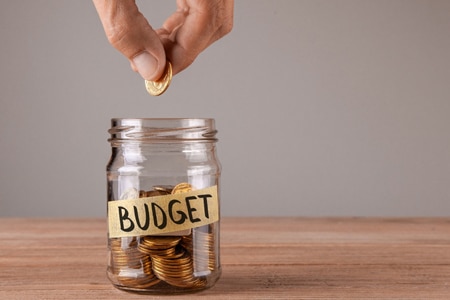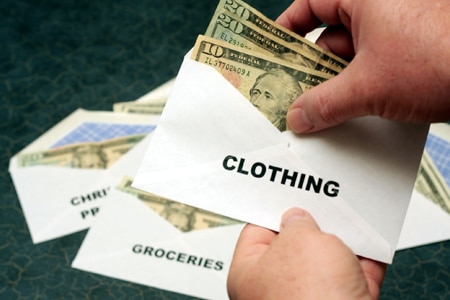5 Simple & Free Financial Tools For Home Budgeting
Important Note: When you buy through our links, we may earn a commission. As an Amazon Associate we earn from qualifying purchases. Content, pricing, offers and availability are subject to change at any time - more info.
Keeping up with your financial goals is tough. Not only do you have to create a budget, but you also need to find the discipline to stick to it. Luckily, there are a number of financial tools that can help make budgeting easier to help you reach your goals faster.
Advertisement
From personal finance software to items you might already have lying around at home, there are so many tools that you can use to get your finances in order that cost very little if anything at all. Keep reading to find out which budgeting tool is right for you.
Top Financial Tools
If you don’t know where to start your budgeting journey, we’re here to help. Below are some of the best financial tools you can use to create your budget and get your finances in order.
Online banking
Most banks nowadays have apps from which you can access your finances, make payments, and even make deposits. Online banking is not only functional, but banking apps can also make for a great online budgeting tool.
Banking apps allow you to have all of your financial information with you everywhere you go, making it easy to keep up with your budget, credit card activity, and bank account information any time you need to. You can pay your bills instantly, as well as quickly transfer and receive money.
Advertisement
Some banks even have additional budgeting resources in their apps to take the convenience one step further. They can display your spending habits in charts and graphs to make it visually easier to keep track of your spending.
You can set budgets, track your earnings and your spending with each bank account you have, and ask to be notified with a warning that you’re spending too much.
Other financial tools that your bank may offer to help with your budgeting include automatic transfers to remove the temptation of spending money before you redirect it to your savings, and alerts of when your account balance is low, to prevent you from incurring pesky overdraft fees.
Mint
Mint is one of the best-known budgeting apps and websites and offers a comprehensive look at your finances without costing you a dime.
As a budget app, Mint allows you to link all of your financial accounts so you can see them all from one place. This at-a-glance view is just the beginning, as it also tracks and categorizes your spending while updating you on your progress for your savings goal. You’ll also be able to track payments with the help of bill reminders, and it visually shows you how your financial decisions may impact your savings growth.
Although Mint is a very popular personal finance software, there are many other options that can help you achieve your financial goals. Some of them cost a monthly fee, but many of them have free options that still have all of the features you need.
Advertisement
Here are some other popular budgeting software platforms to check out:
- SoFi Relay
- GoodBudget
- Albert
- Personal Capital
- You Need a Budget (YNAB)
Budgeting Spreadsheets
Before more advanced budgeting software became widely available, creating spreadsheets was the best way to keep track of your finances. Today, spreadsheets continue to be a reliable and highly customizable way of tracking your income and monthly expenses.
Both Google Sheets and Excel are popular options for creating spreadsheets, and it takes very little time to get started. You can also download budgeting spreadsheet templates that come already formatted with formulas, dates, labels, and anything else you may need to update your spreadsheet. This takes the guesswork out of the process and makes it easy to update your spreadsheet with your latest financial information.
If you want a fully customizable spreadsheet, you can create your own without a template, but there might be a learning curve at the beginning. There are plenty of tutorials you can find online that make the learning process easier.
Cash Envelopes
Using cash envelopes for budgeting has become increasingly popular over the years, and you’ll find plenty of YouTube tutorials to help you get started on this method.
This system involves placing a certain amount of cash in separate envelopes marked for different budgeting categories, such as:
- Groceries
- Dining out
- Clothing
- Entertainment
This method makes it easy to see how much money you have left for each spending category and track your progress throughout the month. Once an envelope is out of cash, you can no longer spend money on that category until you add more cash, which would usually be the following month.
Advertisement
If you don’t feel comfortable having that much cash on hand, you can also create a similar system with your bank by having separate bank accounts for different categories of spending. Once one of those accounts is empty, you can’t spend any more until you transfer more money to it.
A simple pen and paper
All of these financial tools are helpful and will make budgeting a lot easier, but there’s no need to go out and get the latest budgeting app in order to get started. If you’re serious about budgeting, all you really need to get started is a pen and a piece of paper.
At its core, budgeting is keeping track of your finances. As long as you are recording your earnings and expenses somewhere, then you’re budgeting.
The best way to do this method is to have a notebook specifically dedicated to budgeting where you write down all of your expenses. Make sure that you even write down the small expenses, such as your morning cup of coffee, as these small purchases can quickly add up and leave a significant amount of spending unaccounted for in your budget.
To take it a step further, categorize your expenses as either need or wants. This will quickly reveal to you where you should cut spending and redirect towards savings.
Using Financial Tools for More Savings
It’s difficult to stay conscious of your budget if you don’t have it visually presented to you. That’s why using financial tools is the best way to keep track of your money to ensure that you are not overspending and keeping up with your financial goals.
Try some of the tools discussed to see which one works for you, and you’ll soon find yourself on your way to financial freedom.




 Please Support Me on Ko-fi
Please Support Me on Ko-fi